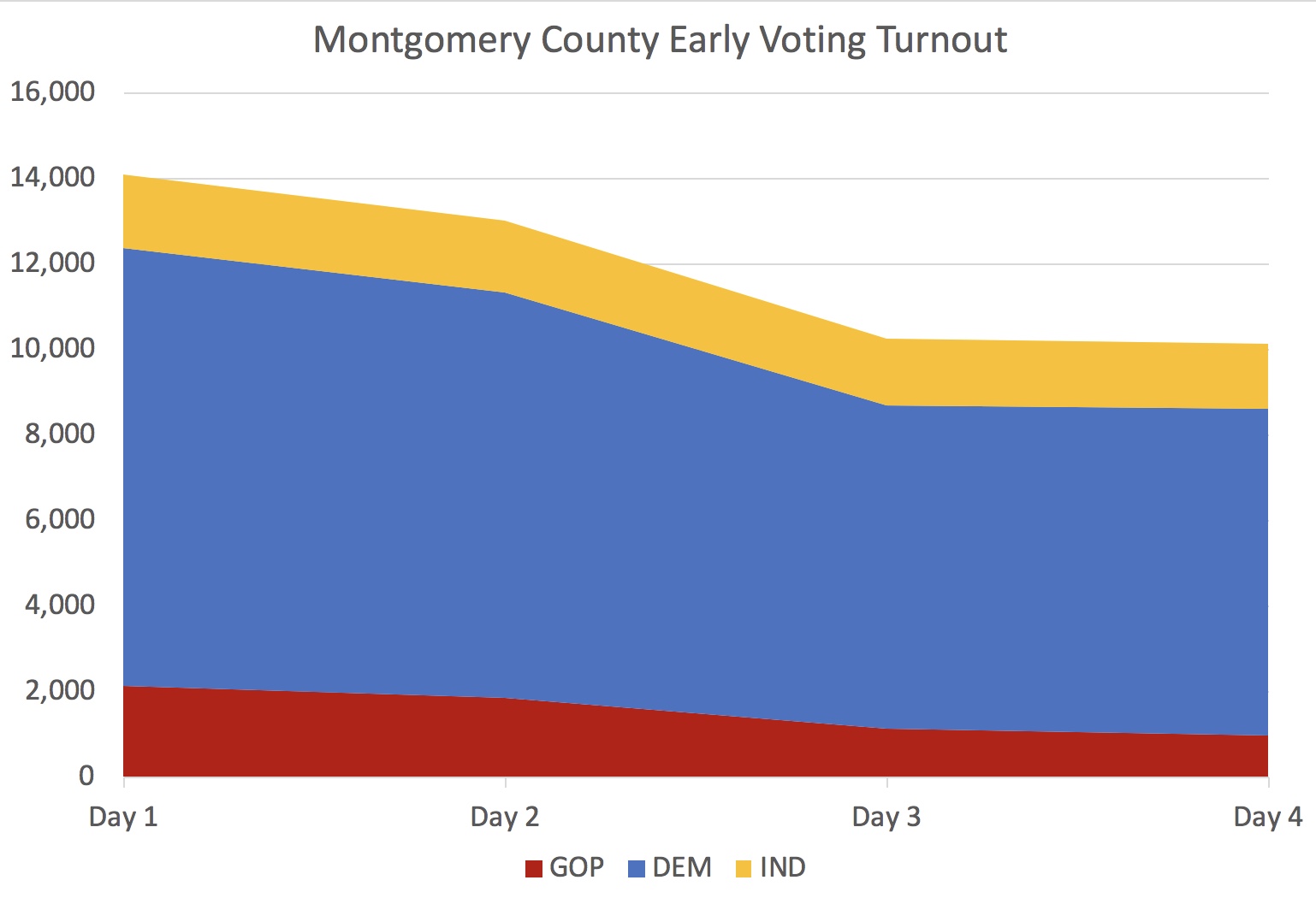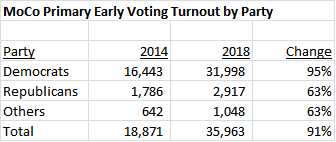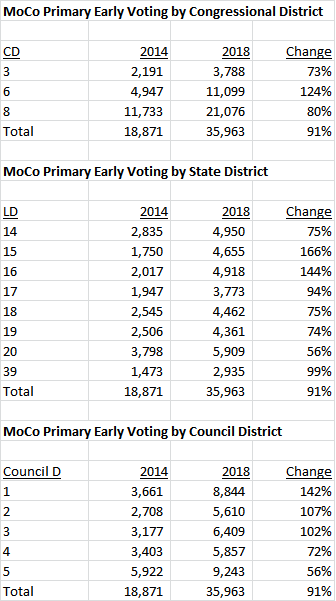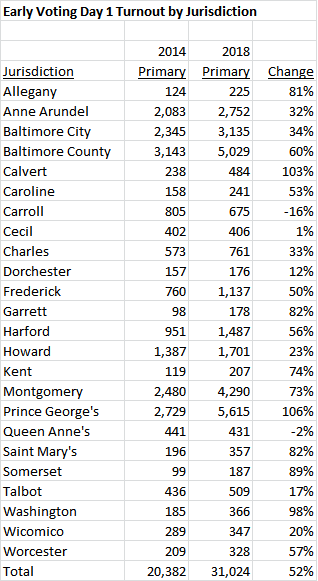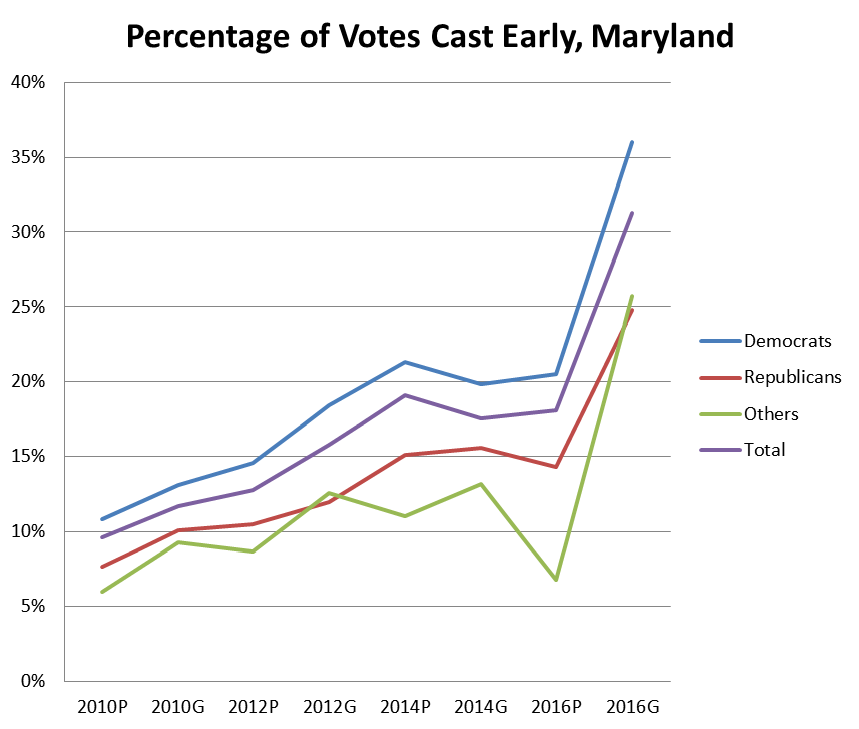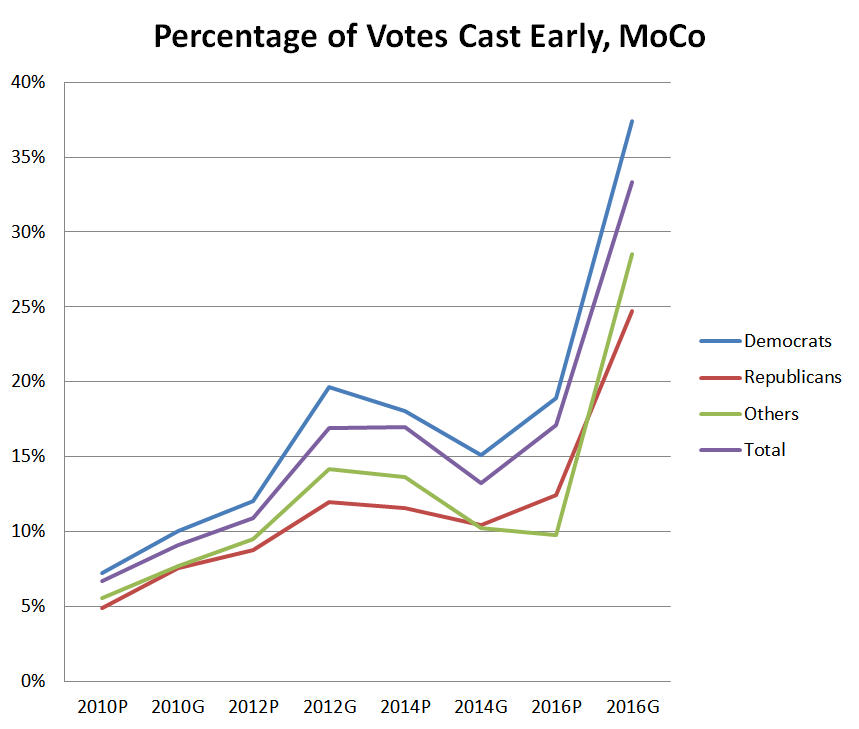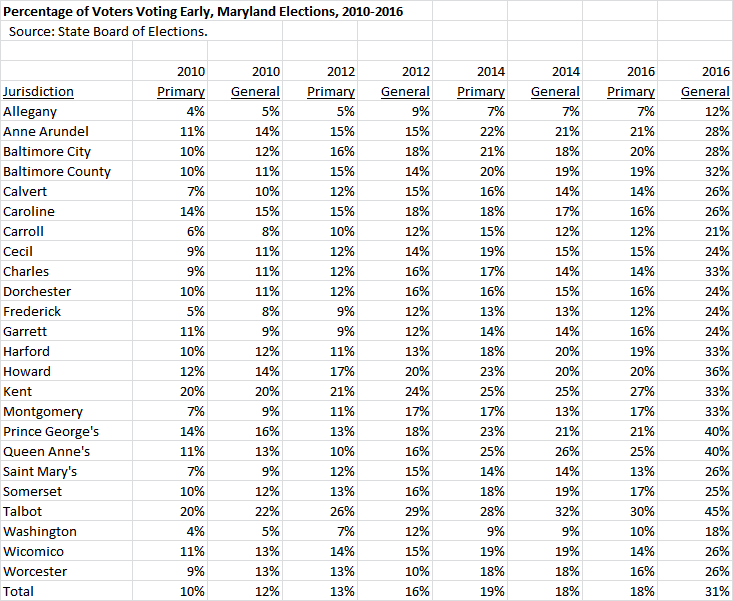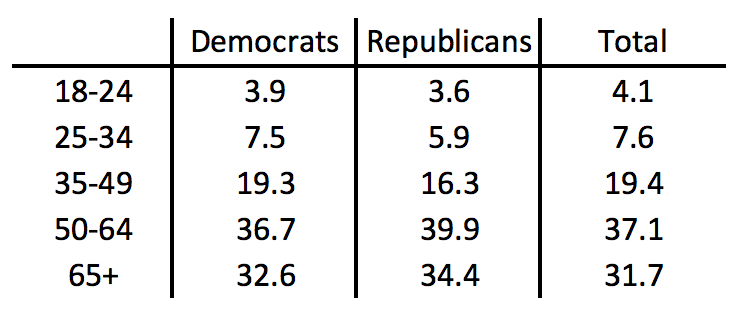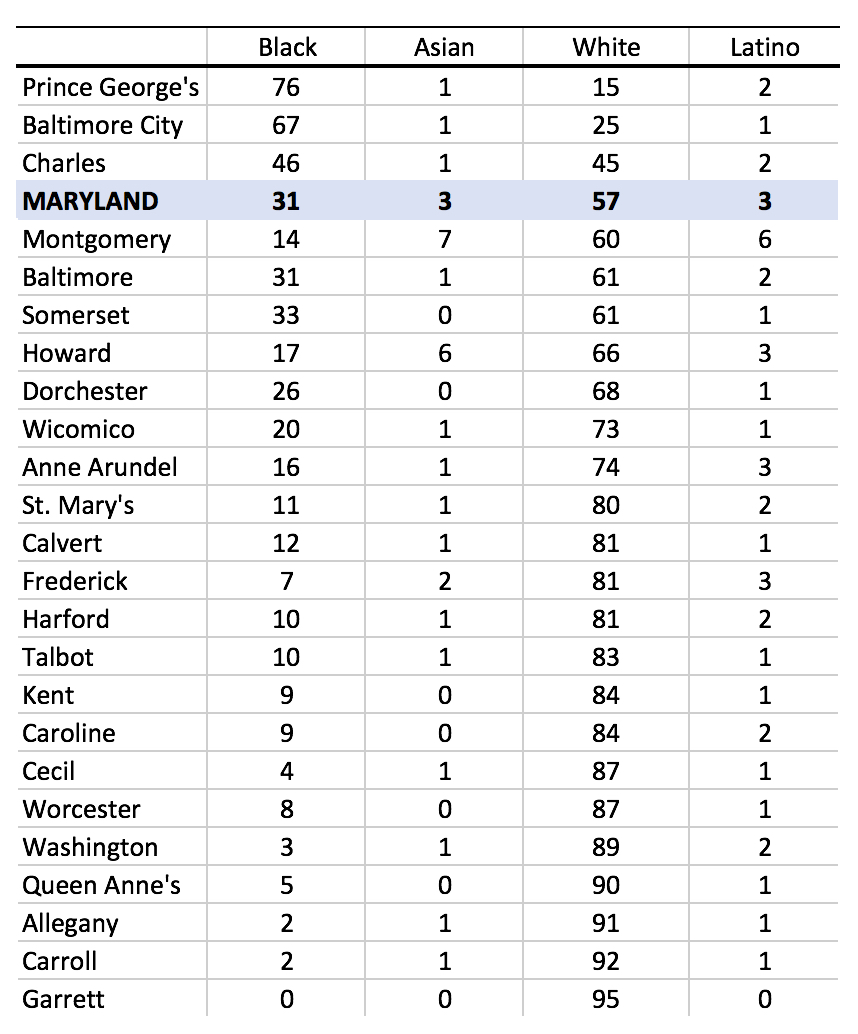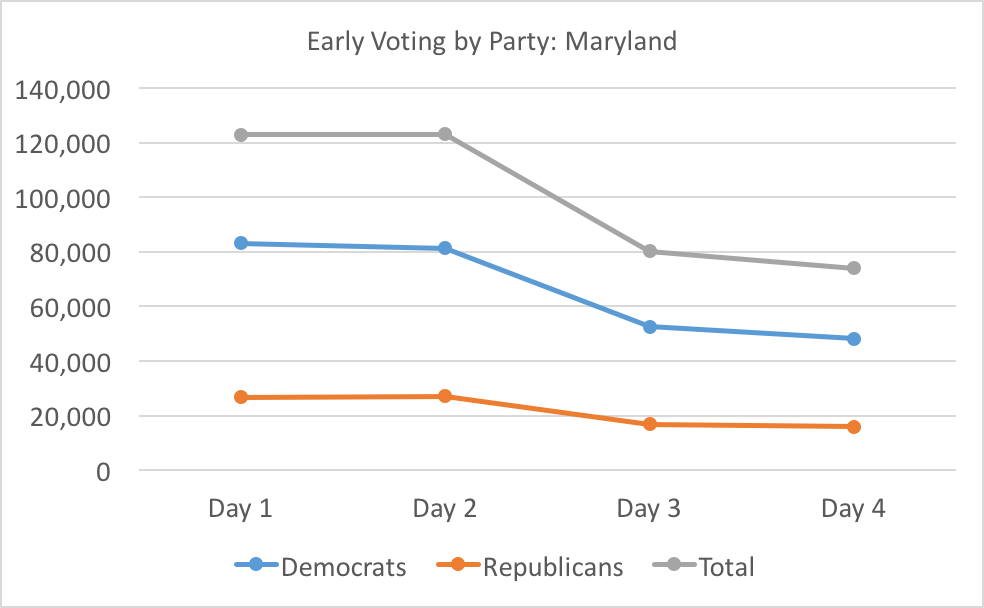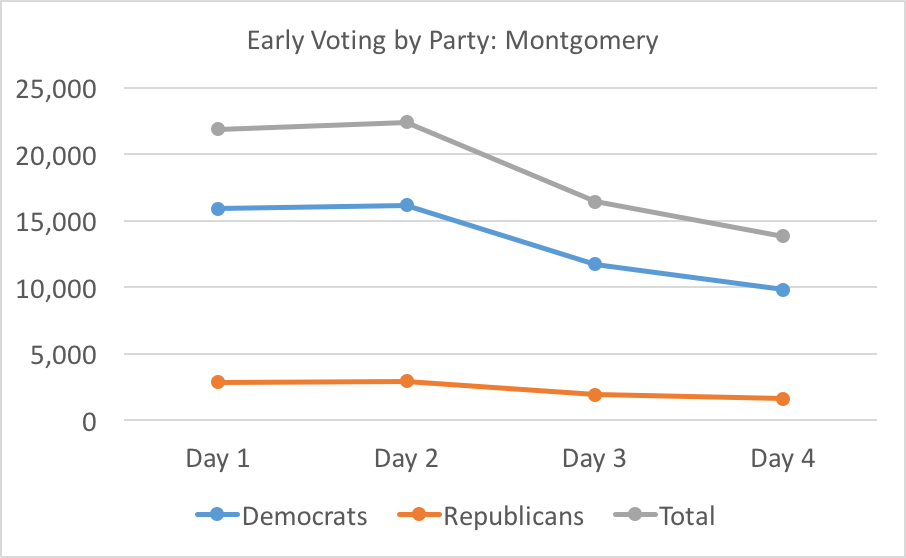Early voting has started in Maryland. The Montgomery County Board of Elections helpfully provided me with statistics on turnout on the first day as well as information on where you can vote early and the lines are shortest.
Is Early Voting Turnout up?
Depends upon how you look at it. In Montgomery County, 14,519 eager voters hit early voting centers yesterday. That’s way up from the 4,321 who did the same in the 2014 midterm election but still decidedly lower than the 21,888 who cast ballots on the first day in the 2016 presidential.
Among the participants, 10,468 were Democrats, 2,168 were Republicans, and 1,883 were unaffiliated, Libertarian or Green party registrants. Based on the number of voters registered at the time of the primary (I can’t seem to locate quickly statistics on current on more recent registration levels), that’s 2.3% of all registered voters.
Good News for Democrats
At the time of the primary, 59.1% of registrants were Democrats, while 17.6% were Republicans and 23.3% were unaffiliated or registered Libertarian or Green.
Early voting statistics look quite different. At the end of the first day, 72.1% of early voters were Democrats – 13.0% higher than their share of the electorate. In contrast, only 14.9% were Republicans, 2.7% less than their share of the electorate.
Unaffiliated voters were the least likely to show up at early voting. Only 13.0% of first-day early voters were unaffiliated (or minor party) registrants. That’s fully 10.3% less than their share of all registered voters.
This last statistic isn’t terribly surprising. While many self-identified independents lean towards one party or the other, core independents who don’t lean towards either party form roughly 10% of the electorate. As a group, these voters know less about politics and participate at lower rates than partisans.
I know someone out there is thinking that this can’t be right because they’re an independent who always votes and some independents are just disenchanted with the two major parties. Remember that this information speaks to the the group of pure independents as a whole and may not apply to individuals.
The data is certainly encouraging for Democrats. However, Republicans tend to be more likely to vote at the polls than take advantage of early voting, so it’d be a mistake to assure that the electorate will necessarily be vastly changed this year.
Early Voting Information
Montgomery County has eleven early voting centers scattered around the county. The county has put together a cool website that now only shows their addresses but has links to maps and wait times.
The center nearest you may not be the quickest if it has a long wait. Traveling just a bit further to another center or going to one near your place of work may take less time if it has no wait. The Damascas Recreation Center, the Mid-County Recreation Center, Sandy Spring Fire Department, and Saint Catherine Laboure tend to have shorter waiting times.
Same Day Registration
On the first day of early voting, 59 people took advantage of the ability to register to vote at early voting. An additional 71 had their address changed or updated. Voters approved same day voter registration during early voting in a 2014 referendum.
Currently, same day voter registration is only allowed at early voting. But voters have a chance to expand this opportunity to election day at the polls by voting FOR Question 2, which would amend the Maryland Constitution to that end. I strongly encourage a vote in favor of this constitutional amendment.
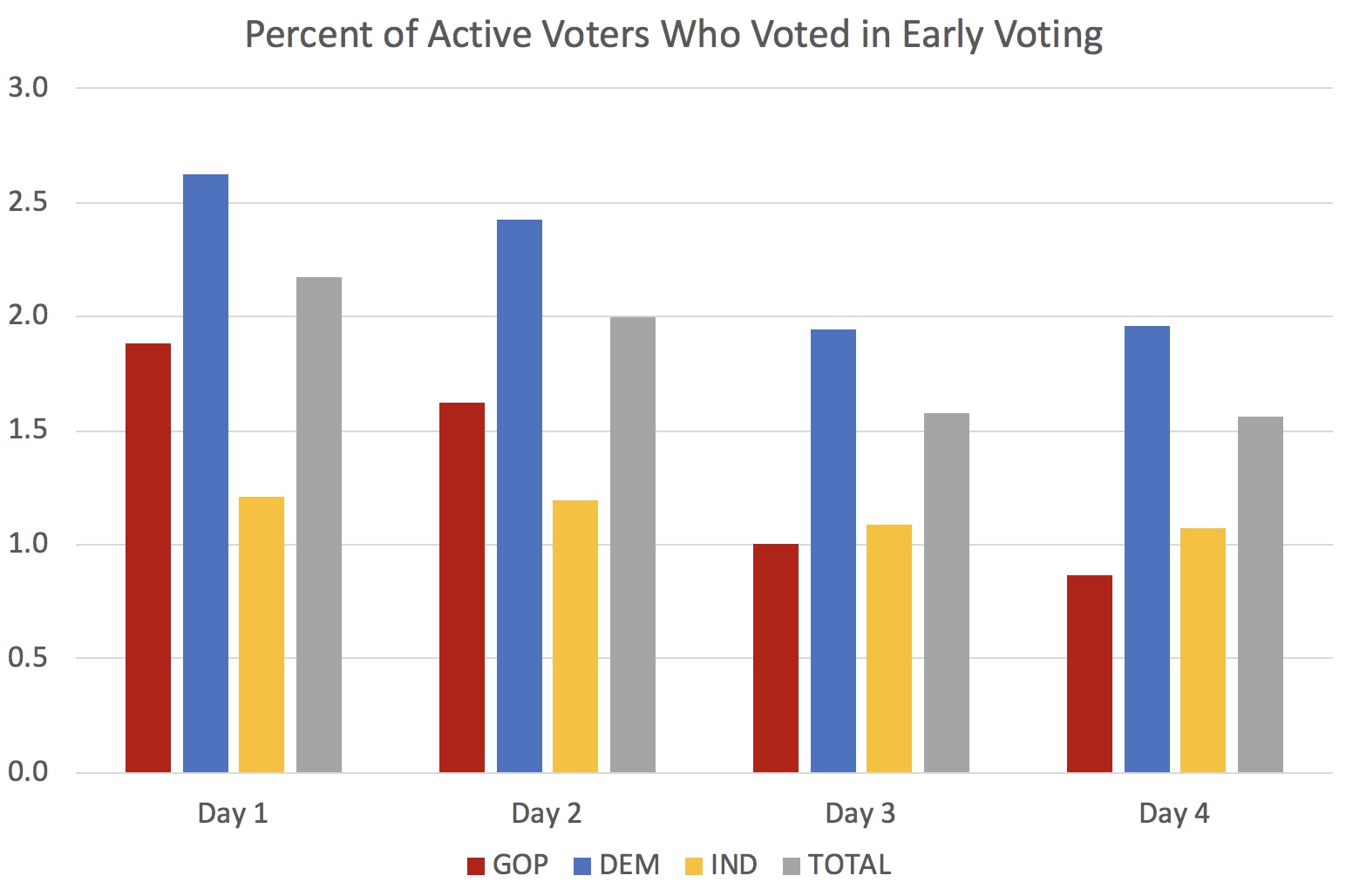 Democrats outnumber Republicans at the polls not only because there are far more of them – 390,400 as opposed to 112,995 Republicans and 142,173 independents – but because they are voting at higher rates.
Democrats outnumber Republicans at the polls not only because there are far more of them – 390,400 as opposed to 112,995 Republicans and 142,173 independents – but because they are voting at higher rates.
